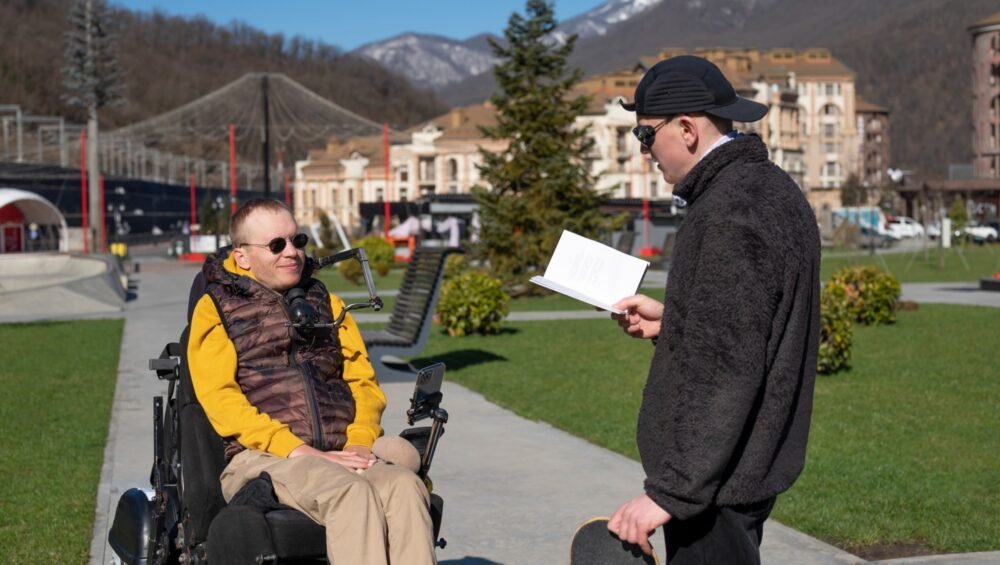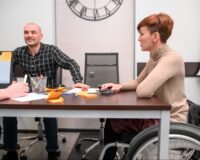The Social Fabric: Weaving Connections Amid Isolation
Settlement goes beyond paperwork—it’s about belonging. Yet for refugees with disabilities, connection often comes at a higher emotional cost. The study found that 72% of respondents with disabilities feel part of Australian communities most or all of the time, compared to 87% of those without disabilities. Likewise, 65% rated their settlement experience positively, trailing behind the 83% in the broader cohort.
Community networks offer crucial lifelines. Refugees with disabilities are more likely to lean on ethnic or cultural groups (54%) and faith-based networks (46%), showing how shared roots can buffer isolation. For families like Haneen’s—caring for her brother Jamal, who has a physical disability—church gatherings bring joy: “If you don’t bring Jamal, don’t come—we want to see him.”
Still, deeper integration remains a steep climb. 77% struggle to make Australian friends (vs 29%), 76% find it difficult to chat with neighbours (vs 31%), and 68% wrestle with local customs (vs 25%). Language barriers and disability-related fatigue often trap social circles within comfort zones, limiting broader inclusion.
Service Navigation: A Maze of Access Gaps
Accessing essential services can feel like an obstacle course. The top barriers include:
– Language difficulties (75%)
– Digital literacy challenges (62%)
– Long waiting times (60%)
– Transport limitations (58%)
These rates far exceed those of refugees without disabilities. While NDIS support is available, participants often report insufficient funded hours and a lack of accessible housing modifications.
Adnan, an Afghan refugee advocating for his brother with cerebral palsy, puts it plainly: “NDIS teams should meet this person and see the needs directly… as refugees, we came with no knowledge or experience.” His call highlights the need for personalised, face-to-face engagement rather than bureaucratic assumptions.
Language as the Linchpin: Motivation Meets Roadblocks
English proficiency is the bridge to opportunity—but for many refugees with disabilities, that bridge is shaky. Despite high motivation, structural issues like online-only classes and one-size-fits-all teaching approaches leave learners behind. Cognitive and physical disabilities add another layer of challenge, compounding the isolation that language barriers already create.
Policy Pivot Points: Toward Inclusive Frameworks
The research calls for urgent integration of disability and refugee policy frameworks. Australia’s obligations under international disability and refugee conventions require proactive inclusion, yet strategies at this intersection remain thin.
The Disability Royal Commission warned of “policy siloing” between culturally and linguistically diverse (CALD) and disability sectors. The NDIS CALD Strategy (2024–2028) is a promising start—but advocates stress it must include direct, family-based assessments and clear data collection to measure progress.
Core recommendations include:
– Developing intersectional refugee-disability policy frameworks.
– Improving service coordination across health, housing, and disability systems.
– Funding targeted research to fill data gaps on refugee disability experiences.
Bridging the Divide: Steps for Allies and Systems
Here’s how different players can help close the gap:
For Services
- Embed interpreters and disability-literate navigators into refugee onboarding.
- Pilot NDIS “Welcome Teams” for refugee households with high support needs.
For Communities
- Host inclusive events blending cultural celebrations with accessibility audits.
- Encourage cross-community mentoring to share lived experience insights.
For Advocates
- Push for refugee-disability data tracking and public reporting.
- Champion policy reform linking humanitarian resettlement with disability inclusion.
For Individuals
- Volunteer or support organisations like Settlement Services International (SSI).
- Foster empathy—small conversations can rebuild belonging.
Reflections from the Frontlines: Inclusion Starts with Seeing the Whole Picture
This study reminds us that inclusion isn’t one-dimensional. Refugees with disabilities bring resilience, talent, and hope—but systems must meet them halfway. As Australia refines the NDIS and refugee frameworks, this is a wake-up call: true belonging requires intersectional thinking.
By addressing the gaps between policy intent and lived experience, Australia can ensure every newcomer—not just the most visible—finds a place to thrive.
FAQs
- Who conducted this study?
The research was a collaboration between Western Sydney University and Settlement Services International (SSI), focusing on refugees with disabilities living in Australia. - What were the key findings?
Refugees with disabilities reported higher levels of isolation, language barriers, and service navigation challenges compared to those without disabilities. - How does this relate to the NDIS?
The study calls for NDIS and refugee settlement systems to coordinate more closely, ensuring newcomers with disabilities get culturally and linguistically appropriate support. - What are the main policy recommendations?
Develop intersectional frameworks, improve data tracking, and coordinate services across government agencies. - How can individuals help?
Volunteer with refugee support organisations, advocate for inclusive policies, or help amplify lived-experience stories in your community.






